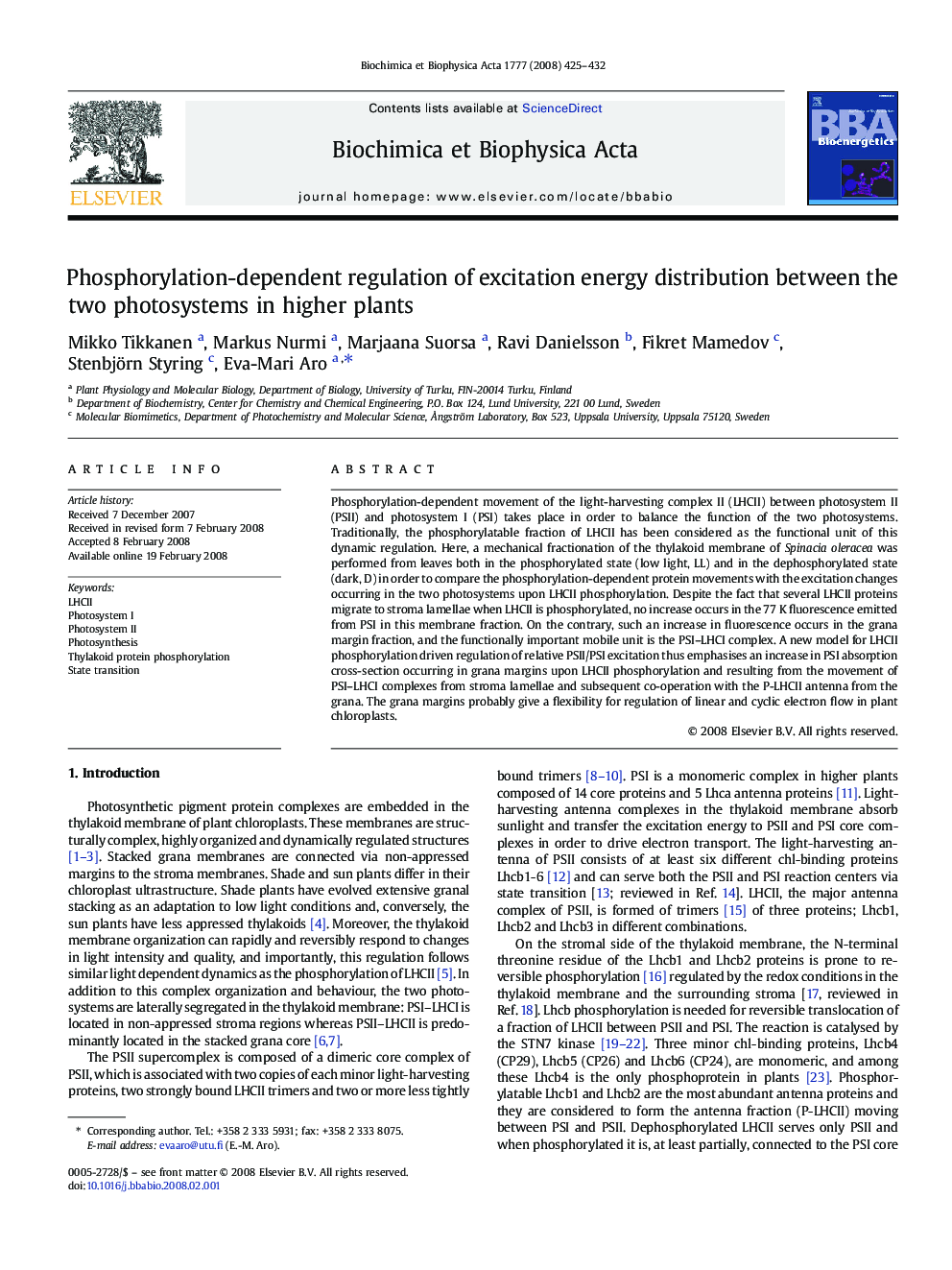| Article ID | Journal | Published Year | Pages | File Type |
|---|---|---|---|---|
| 1943401 | Biochimica et Biophysica Acta (BBA) - Bioenergetics | 2008 | 8 Pages |
Phosphorylation-dependent movement of the light-harvesting complex II (LHCII) between photosystem II (PSII) and photosystem I (PSI) takes place in order to balance the function of the two photosystems. Traditionally, the phosphorylatable fraction of LHCII has been considered as the functional unit of this dynamic regulation. Here, a mechanical fractionation of the thylakoid membrane of Spinacia oleracea was performed from leaves both in the phosphorylated state (low light, LL) and in the dephosphorylated state (dark, D) in order to compare the phosphorylation-dependent protein movements with the excitation changes occurring in the two photosystems upon LHCII phosphorylation. Despite the fact that several LHCII proteins migrate to stroma lamellae when LHCII is phosphorylated, no increase occurs in the 77 K fluorescence emitted from PSI in this membrane fraction. On the contrary, such an increase in fluorescence occurs in the grana margin fraction, and the functionally important mobile unit is the PSI–LHCI complex. A new model for LHCII phosphorylation driven regulation of relative PSII/PSI excitation thus emphasises an increase in PSI absorption cross-section occurring in grana margins upon LHCII phosphorylation and resulting from the movement of PSI–LHCI complexes from stroma lamellae and subsequent co-operation with the P-LHCII antenna from the grana. The grana margins probably give a flexibility for regulation of linear and cyclic electron flow in plant chloroplasts.
